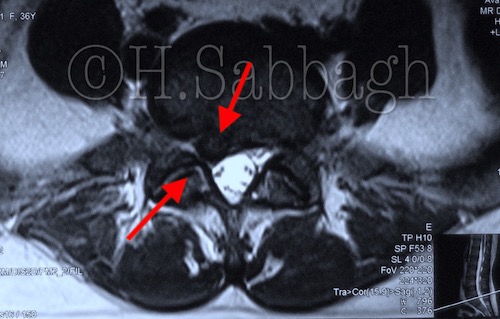Discussion
In cases of moderate-severe radiculopathies due to IVD structural pathology such as this case, performing a comprehensive neurological work-up to rule out any ongoing neurological deficit, and / or distinguishing a pre-existing deficit is absolutely empirical.
And just as important, is arriving at a reliable short and long term prognosis prior to initiation of the treatment protocol. This patient was also visited by at least two neurosurgeons, who had made different recommendations regarding surgical intervention.
Generally speaking, structural retrolisthesis such as seen in this particular case, even so minor, can interfere with a closed reduction procedure and requires fine compensatory adjustment of DPPP-SAA line of drive components.
It is important to note that the structural retrolithesis of L5 and the endplate degenerative changes as mentioned earlier are both important considerations in selecting the proper components of the DPPP-SAA protocol. It is therefore essential to tailor the treatment protocol specifically for each particular case. The concept of generalized treatment protocol certainly does not apply in this and similar cases.
It is important to note that structural retrolisthesis not only interferes with the normal ROM of the motor unit, but because it negatively alters the IAR, as well as the load factor within the centrode, it must be considered in the selection of Apical Load, AD angle, as well as the X-Z components.
Presence of degenerative changes, particularly that of the end plates, such as the Modic Type II seen here (Cyan Arrow), are important to recognize, as they can directly affect the short term response, as well as the long term prognosis.
And of course, last but not the least, is the importance of patient compliance with the restrictions, necessary re-evaluations, etc.., which in this particular case was far from desirable.
This further reiterates that proper patient selection involves more than just clinical presentation, but the patient’s emotional state can also play an important role, and it should be taken into consideration.
Nevertheless, in this case, both the initial response to treatment, as well as the long term structural improvements had favorable results with minimum side effects or risk for the patient.
H. Sabbagh D.C.
Published: September 10, 2023


